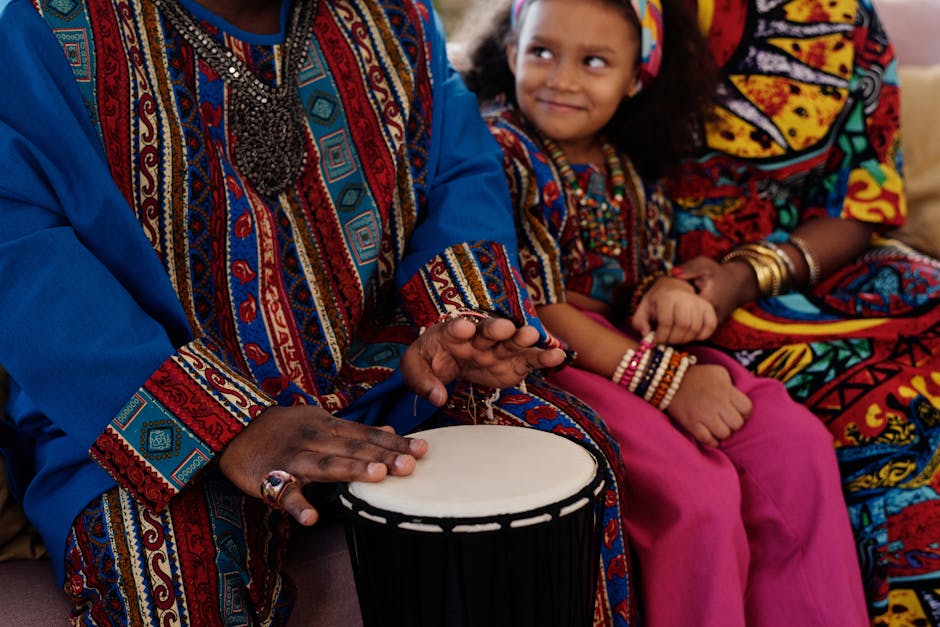If you go to a Shakira concert, you may see
her do this. It's this part of her show where the drummer
starts soloing and she's kind of freestyle dancing. And during this section, she's dancing to
a variation of the exact same beat. In its most basic form, it sounds like this. "Cumbia de Colombia!" Did you catch that? "Cumbia de Colombia". The music is called cumbia. You can even hear it in electronic dance tracks.
And it has its own category in the Latin Grammys. And it all started here, up near the Caribbean
coast of Colombia. I traveled to the villages where cumbia comes
from. And I learned that this specific place, here
along the Magdalena River, was fertile soil from which this music could grow. But cumbia is in fact a blend of several strong
musical traditions. Mainly African and indigenous, but also European,
mixing together to make something new. Something totally unique to the time and place
from which it came. Okay now just watch what these two drummers
are playing. We can also look at this another way. This beat is the backbone of cumbia.
And I wanted to find out where it came from,
so I flew to the beautiful Caribbean city of Cartagena and drove south to a village
that was founded hundreds of years ago. In the early 1500s, the Spanish came to Colombia
as part of their Latin American conquest. And with them they brought more than 100,00
captive Africans. But some of these slaves managed to escape
and build their own communities. And that's how this village was formed. This place is the first known settlement of
slaves who rebelled and started their own community back in the 17th century. And so because of that, they were able to
maintain a great deal of their African culture. The residents of this village preserve their
history with music, which is based on the rhythms their ancestors brought over from
the homeland.

These songs are a living, breathing part of
the town's culture and history. And with time, these beats started to spread
in the region, influencing different styles of music. Does this sound familiar? This is the beating heart of cumbia and no
matter how many instruments are incorporated, or in what country it's played, the beat always
stays the same. The drumbeat brought over from Africa is the
main ingredient of cumbia, but eventually the rhythm started blending with instruments
from a totally different musical culture: that of the indigenous people of Colombia. I came to visit the Gaiteros de San Jacinto,
a musical group that has been playing cumbia since the 1950's. In 2007 they won a Latin Grammy for their
folk album and they're able to continue by training up new generations, who keep these
old traditions alive.
We're in the backyard of one of the drummers, who's showing me how they make their own instruments using the same methods their ancestors did,
like these maracas. And this flute, called the Gaita, which is
a quintessential indigenous instrument. So this is what the cultural fusion of the
root of cumbia looks like: you have the Gaita, a key element in indigenous music, and then
you have the drum section playing rhythms directly influenced by the African village
just an hour from here. Together they create this unique cumbia sound. In addition to the African rhythm and the
indigenous wind instruments, there's one more ingredient to this fusion: the European influence.
The cumbia is always evolving and there's one more European influence that is more recent. It's this instrument that Yeison is holding:
the accordion. And in fact, it was his grandfather, dubbed
the "King of cumbia," who traded his Gaita flute for an accordion, thus changing cumbia
forever. But once formed in this region, it didn't
stay put. In the past century, cumbia has spread throughout
all of Latin America, further evolving in the process. While I was in Colombia, I shot an extra bonus episode for our friends over at Eater. It's about this amazing fruit market in Bogota
that I visited and it was really fun. I think you'll love it. It's gonna be published on Eater's YouTube
channel, so head over there to subscribe and I hope you like the episode..

